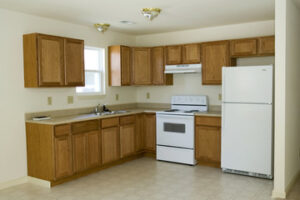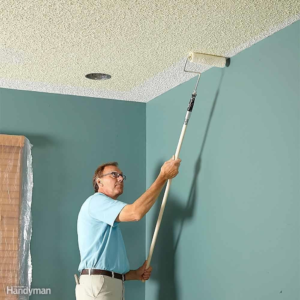Cabinet Refacing Sacramento CA involves upgrading your kitchen cabinets with new doors and drawer fronts. The refacing process is less invasive than a full replacement and reduces mess and disruption in your home.

Different refacing materials can suit different design aesthetics. Solid wood veneers tend to favor rustic and traditional styles while PVC vinyl works best with contemporary designs.
Cabinet refacing costs significantly less than a complete replacement, saving you money and allowing you to achieve your desired kitchen design. Refacing also offers the added benefit of saving you time and reducing disruption to your daily life during the remodel, as it requires less demolition and construction than a full remodeling project.
Another benefit of cabinet refacing is that it can improve your home’s resale value. The cost-effective and eco-friendly nature of this type of kitchen renovation is appealing to many potential buyers, as it can help your home stand out in a competitive market. Ultimately, the value of your home’s resale is dependent on several factors, including location and local real estate values.
The cabinet refacing process reduces waste and helps to preserve natural resources, such as wood. This is because it uses existing cabinet boxes and frames, minimizing the need for new materials. In contrast, replacing cabinets typically requires the manufacture of new boxes and doors, which require substantial amounts of raw material. This additional waste contributes to landfill overflow and diverts usable materials from recycling facilities.
Choosing to reface your cabinets can make a positive impact on the environment, as it eliminates the need for waste disposal and transportation. Moreover, it saves energy and reduces greenhouse gas emissions as compared to a complete kitchen remodel. The manufacturing process of new cabinets from raw materials is energy-intensive, producing a large amount of carbon dioxide.
Additionally, cabinet refacing is an environmentally sustainable remodeling option because it uses the existing frame and box structure of your existing cabinets, only replacing the fronts and hardware. This process also keeps the original cabinet structures intact, which extends their lifespan and avoids discarding them at landfills. Additionally, refacing does not require the use of any new wood, which protects our forests by lowering demand for raw materials.
Appearance
Cabinet refacing allows homeowners to significantly alter the aesthetic of their kitchen without having to incur the cost and inconvenience associated with a complete renovation. During the process, homeowners can choose from a wide array of door styles, finishes, and hardware to curate the desired style of their kitchen. This allows homeowners to create a more modern or classic appearance and match their home’s overall design style.
Additionally, cabinet refacing is a more sustainable option than a complete remodel as it reuses existing materials rather than discarding them. The process also reduces waste by using existing cabinet boxes and incorporating new veneer surfaces to update the appearance of the kitchen without replacing or modifying the underlying structure of the cabinets.
The refacing process typically uses wood or Medium-Density Fiberboard (MDF) with a Rigid Thermofoil (RTF) finish, both of which offer natural beauty and durability. Both options can be customized to meet individual homeowner preferences, with the choice of wood type and grain being the most important decision. Solid wood is derived from broad-leaf trees and has an inherent beauty that will age beautifully over time, while MDF and RTF provide a consistent look with a more durable finish.
Both material types are available in a variety of grain patterns and colors, giving homeowners the option to customize their kitchen’s appearance with a unique finish. However, when used for exposed surfaces, solid wood may require more maintenance than other materials, including regular sanding and painting. In addition, moisture in the kitchen environment can cause cabinet problems like warping and mold growth.
As a result, it is highly recommended that homeowners empty their cabinets during the refacing process. This will ensure the safety of their belongings and make it easier for refacing professionals to access and work on the cabinets. It will also help prevent any accidental damage or breakage during the remodeling process.
Lastly, cabinet refacing is a great way to improve the functionality of the kitchen by installing additional features, such as pull-out drawers and shelves. This will help homeowners better organize their kitchen and make it more functional for their family’s needs.
Durability
Cabinet refacing has become a popular kitchen remodeling option for homeowners looking to give their spaces a new look without spending the time and money necessary to complete a full remodel. It involves replacing the cabinet doors, drawer fronts, and hardware while leaving the original cabinet boxes intact. However, how long can you expect your refacing project to last? This blog post will explore some of the factors that impact durability and offer tips on maximizing longevity.
Choosing high-quality materials is essential to ensure that your refacing job withstands daily wear and tear. Laminate is a budget-friendly option that can last 10-15 years with proper care, while veneer provides a more natural wood appearance and offers a longer lifespan (15-20 years). In addition to using durable materials, it is important to have your refacing project completed by a qualified and experienced professional. Poor installation techniques can lead to a subpar result, which may cause problems down the road. Look for signs of a poor refacing job, such as misaligned door alignment or visible gaps between panels.
The type of climate where you live can also impact the durability of your refacing project. Humid areas that experience frequent moisture can cause cabinet materials to swell or warp, which may require additional maintenance or repairs down the road. In addition, excessive heat can cause the adhesives used in refacing to weaken over time.
Another benefit of cabinet refacing is that it reduces landfill waste by reusing the existing cabinet structures rather than discarding them. This helps to reduce demand for new timber, which preserves our natural resources and helps to protect the planet. In contrast, a full cabinet replacement requires the purchase of new cabinets and labor to install them. Therefore, refacing is an eco-friendly choice that helps to protect our environment while providing homeowners with the beautiful kitchens they desire. If you are considering cabinet refacing in your home, we encourage you to contact us to learn more about the process and how it can help you achieve your dream kitchen! Whether you’re seeking a classic look or something more contemporary, we have a wide range of options to suit your taste.
Maintenance
Cabinet refacing is a cost-effective way to upgrade your kitchen. It can give your old cabinets a new look and improve your home’s curb appeal. It is also much easier to perform than a complete kitchen remodel. Most refacing projects can be completed in about a week, and your kitchen will remain fully functional. However, you should be aware of the maintenance requirements for cabinet refacing. Some of the issues that may arise include warped doors and loose veneers.
A reputable company will use quality materials and ensure that your kitchen cabinets are installed correctly to avoid these problems. A good contractor will also be able to work within your timeline to minimize disruptions to your home life. They will also keep a clean worksite and be respectful of your space. You should also check the quality of materials that your service provider uses, as this will affect the longevity of the refacing.
The most common type of refacing is laminate, which has a variety of colors and requires little maintenance. However, it can swell in humid environments and is not as durable as solid wood. Another option is to use a high-quality hardwood veneer, which is more durable than laminate but less expensive.
Some refacing companies offer different color options, including gray driftwood and bright white. These options can dramatically change the look of a room and make it feel fresher and more modern. The flexibility in color and style options can also be a great benefit for homeowners who want to refresh their homes without spending a lot of money.
The main drawback of refacing is that it doesn’t allow for significant structural changes. The process involves swapping out the doors and drawer fronts while leaving the cabinet boxes intact. It’s important to consider this limitation before refacing your cabinets, because it could be difficult to repair any structural or water damage issues.
If you have a lot of structural problems with your cabinet boxes, you may be better off with a total replacement. Refacing won’t fix fundamental layout or design issues such as a poor work triangle or closed-in feeling.
